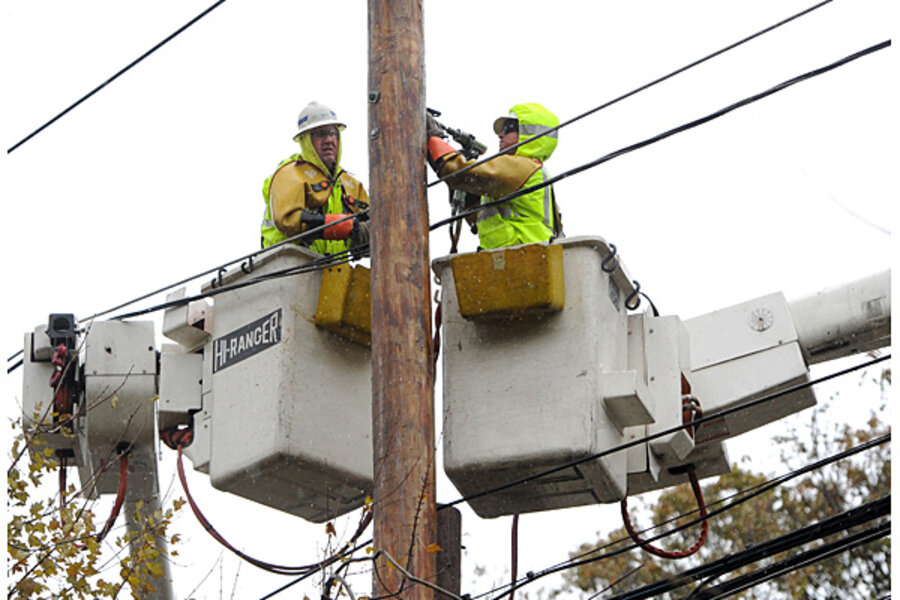Three ways utilities can lead energy innovation
Loading...
The speed of innovation outside the walls of utilities outstrips the speed of innovation within. As new and disruptive vendors, technologies, and business models enter the market, many utilities have seemed unsure about what their role is or should be. In the third in our four-part series (See Part I by Mat McDermid, Finding the Regulated Utility Role in a Shifting Energy Landscape; and Part II by Sam Shrank, How Behavioral Science Can Increase Energy Efficiency Adoption), we discuss how utilities can and should leverage their unique position to accelerate and manage the deployment of innovations for the benefits of all customers.
Here are three roles utilities can play to better manage innovation in a changing market.
The ambassador: help customers understand the benefits of new innovations
Technology advancements are broadening customer access to a wide range of new energy services. But technology alone is never enough: customers must feel comfortable incorporating these advancements into their daily lives. Utilities are well-suited to providing customers with answers on a wide range of energy services and moving them up the adoption curve. They have already achieved significant success in areas such as energy efficiency, where the average cost per kWh saved through utility energy efficiency programs is just 2.5 cents. Areas such as electric vehicles are opportunities for utilities to build on this success as ambassadors for new energy services.
Many customers are already somewhat familiar with the host of benefits promised by electric vehicles, such as lower fuel costs, greater energy independence, and reduced emissions. However, as new charging technologies and batteries enter the market, customers have many questions about adoption expense, reliability, and technical feasibility.
Instead of navigating through car dealerships, government incentives, and other disaggregated resources, utilities can serve as a one-stop shop for customers as they assess and manage their vehicle options. A program for EV adoption could combine in-person touch points like garage visits (similar to those offered byBest Buy’s Geek Squad), as well as tools for calculating cost of ownership based on current rate plans and information about incentives. In addition to providing immediate customer benefits, these services also represent an opportunity for utilities to strengthen and expand their customer relationships.
The strategist: take the 10,000 foot view to maximize benefits
Start-ups may each have a piece of the puzzle when it comes to energy innovation, but utilities can see the entire board. Leveraging their customer relationships, regulatory mandate, and growing data fluency, utilities can enhance the value of innovations for customers in ways that independent start-ups cannot.
In the solar market, SunRun, First Solar, Solar City, and a myriad of other companies are finding effective ways to meet individual customer needs, whether through new financing mechanisms, enhanced customer service, or simply an accessible brand. But there’s no reason for third parties to have all the fun. Utilities are singular in their ability to promote installations and approaches that enhance efficiency, reliability, and cost-effectiveness across the entire customer base.
For example, utilities can work with regulators and third parties to prioritize distributed generation projects in their service territories. This could include doing a “hot spot” analysis of areas of local congestion, aging infrastructure, and high distributed generation potential. Playing the role of the strategist will require utilities to develop new and stronger relationships, but a collaborative approach can create wins for all stakeholders by meeting policy goals, reducing price separation, and improving the interconnection process.
The matchmaker: enhance synergies across the board
What seems new is often an unexpected combination of the old. Because of their breadth of capabilities, utilities are often best positioned to maximize synergies between smart technologies, energy efficiency programs, renewable energy, alternative fuel vehicles, and so on. They also have the ability to anchor cross-industry partnerships that support these synergies.
This is an emerging area, but some encouraging pilot programs have already taken off. In California, the SMUD Anatolia pilot examined how distributed solar, smart meters, and community battery storage can work together to better integrate renewables onto the grid and meet “super-peak” demand. As part of Envision Charlotte, Duke Energy is providing smart infrastructure, energy dashboards, and an online platform for monitoring and acting on energy insights in support of a 20% community energy reduction goal. Deployed at scale, these pilots have the potential to disrupt the current models for energy supply and delivery for the better.
Don’t wait on innovation
As we’ve seen in the first articles in this series (Finding the Regulated Utility Role in a Shifting Energy Landscape, and How Behavioral Science Can Increase Energy Efficiency Adoption), the power sector is evolving from a focus on commodity delivery to a new emphasis on customer needs. Formulating the optimal response to this evolution can be complex, and involves a comprehensive understanding of technology benefits, customer expectations, and the regulatory and market dynamics. But by formulating a response, utilities not only have the opportunity to define their role in the market, they have the ability to proactively shape the energy landscape in a way that optimizes benefits for all stakeholders.
Jill Bunting and Raphael Tehranian are Associates with GreenOrder/Cleantech Group, uniting the worlds of sustainability and cleantech to provide a broad array of data, networking, and advisory services. For more information about the writers, see Jill’s bio, and Raphael’s bio.







